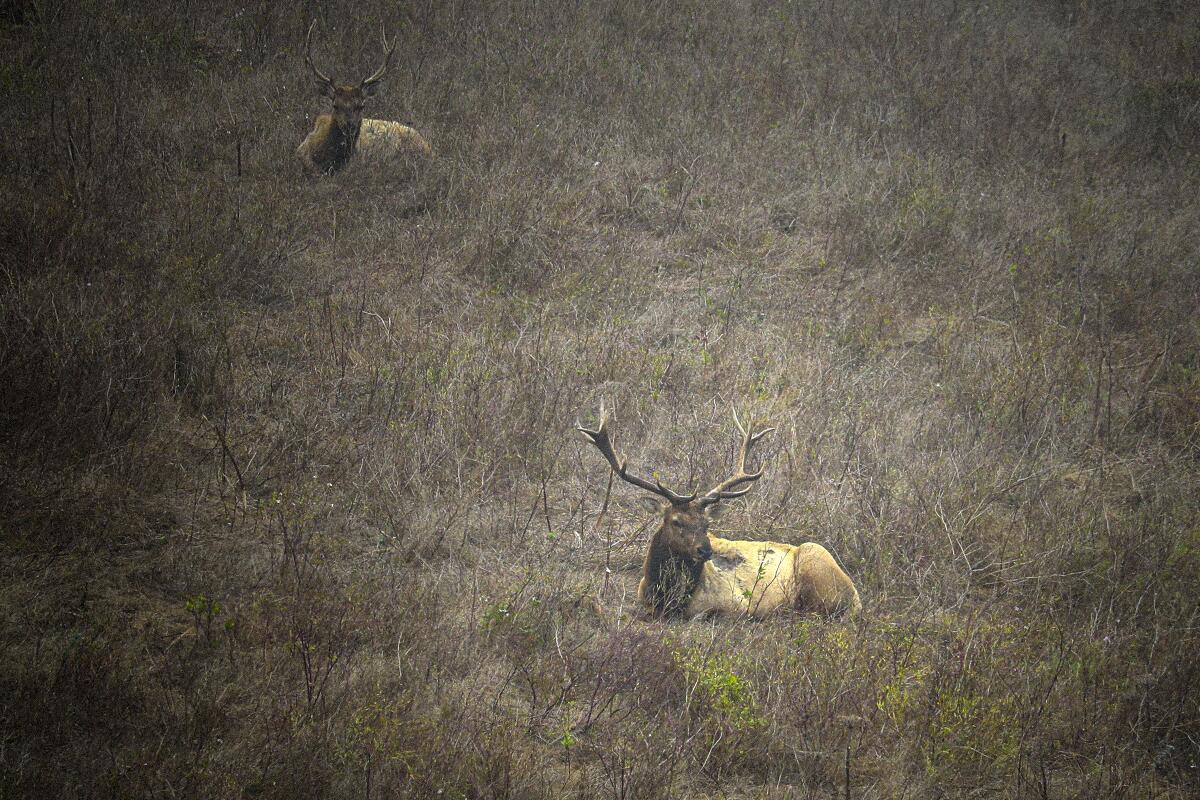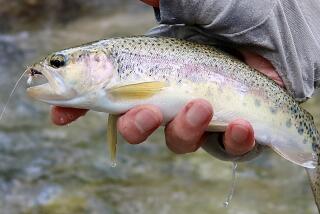The Point Reyes tule elk will finally roam free, Park Service announces

- Share via
After years of debate, nearly two miles of fencing that prevented Point Reyes National Seashore tule elk from accessing water and competing for food with nearby cattle will be removed, the National Park Service announced Monday.
The 8-foot-high, 2.2-mile enclosure fence, which was decried as inhumane by animal rights activists but supported by cattle ranchers, will be removed along with all temporary water systems.
“We analyzed three alternatives and incorporated feedback from over 35,000 public comment letters gathered during three comment periods,” said Anne Altman, park superintendent, in a media statement. “The benefit of removing this enclosure is to allow elk to access additional habitat, increase the species’ population resilience during drought, and promote a more natural population cycle.”

In 2021, the federal agency released a report that showed more than one third of the 445 elk fenced in at Tomales Point at the time had died the previous winter, reducing the population to 293.
Environmental and animal activists called on the Park Service to remove the fence, saying that it prevented the elk from reaching fresh water outside of the enclosure. Animal rights groups tried to bring water to the elk in 2020 but were rebuffed.
The fence was first installed in 1978 after tule elk were reintroduced to Tomales Point. The minimum population estimate for the herd is 315 elk, according to NPS’ 2024 annual count.
Their fenced-down freedom is expected to, both quickly and over time, improve the health of the herd. Significantly, it will reduce the number of elk deaths from thirst and starvation during California’s hot, dry summer and autumn seasons.
More to Read
Sign up for Essential California
The most important California stories and recommendations in your inbox every morning.
You may occasionally receive promotional content from the Los Angeles Times.











